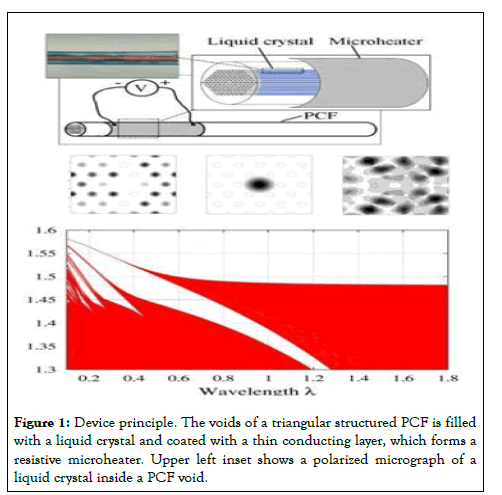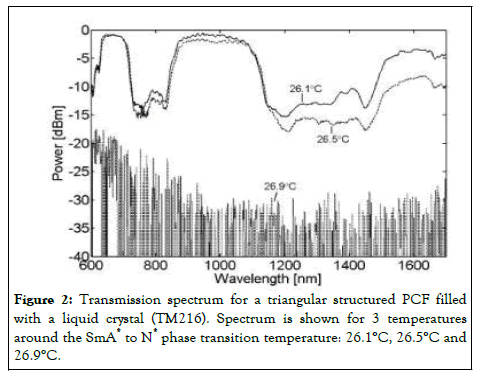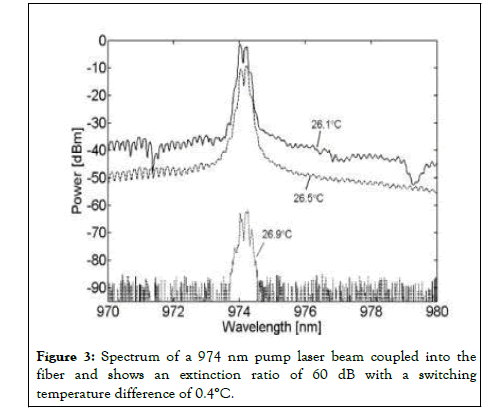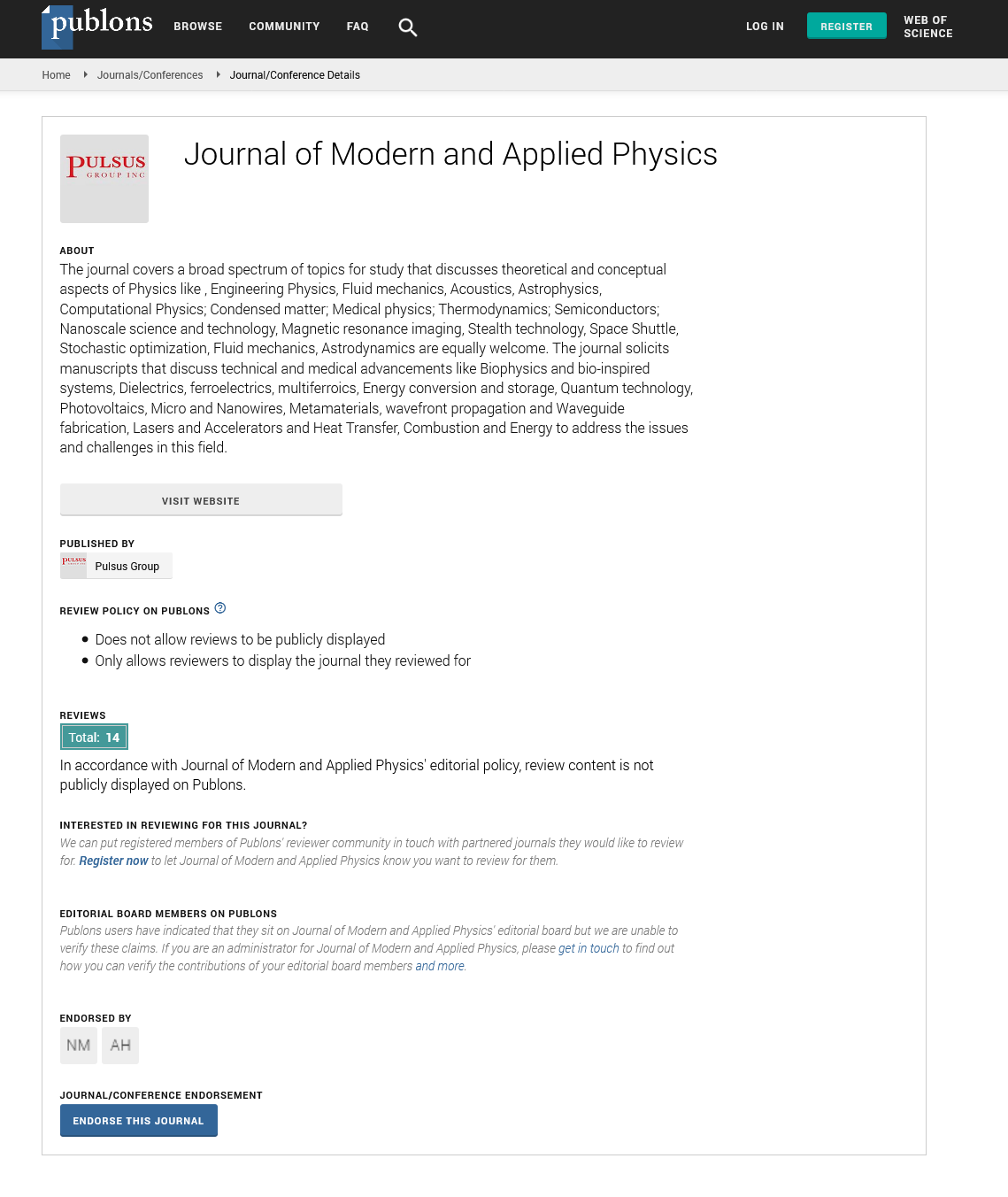Liquid crystals functionalizing for photonic, bio-photonic and multi physics devices
Received: 15-Jul-2024, Manuscript No. PULJMAP-24-2770; Editor assigned: 17-Jul-2024, Pre QC No. PULJMAP-24-2770(PQ); Accepted Date: Aug 08, 2024; Reviewed: 31-Jul-2024 QC No. PULJMAP-24-2770; Revised: 07-Aug-2024, Manuscript No. PULJMAP-24-2770(R); Published: 12-Aug-2024, DOI: DOI: 10.37532/puljmap.2024.7(3).01-03.
Citation: Kochurad V. Liquid crystals functionalizing for photonic, bio-photonic and multi physics devices. J Mod Appl Phys 2022;5(5):1-3.
This open-access article is distributed under the terms of the Creative Commons Attribution Non-Commercial License (CC BY-NC) (http://creativecommons.org/licenses/by-nc/4.0/), which permits reuse, distribution and reproduction of the article, provided that the original work is properly cited and the reuse is restricted to noncommercial purposes. For commercial reuse, contact reprints@pulsus.com
Abstract
The knowledge on the manipulation of energy is of core importance for research, technological innovation and industry. The different materials and configurations are used to build the related devices which are monopurpose and mono physics dealing with a single type of energy. An alternative to bypass these problems is the usage of liquid crystals: Inanimate or living ones. In this work, we show our results on modeling and simulating three kinds of diode (thermal, bio-optical and thermal-optical), a sensor based on the thermal hall effect and a thermal-optical controller. It was found that diodes having an asymmetric molecular director and asymmetric physical tensors with rectification effect can be created by an escaped radial disclination confined in an capillary tube (dielectric, thermal conductivity). This asymmetry, studied by classical and geometrical models generates the thermal and optical rectifications. For such diodes, we study them made by 5CB and a chromonic liquid crystal hosting the bacterium Bacillus subtilis. The sensor based on the thermal Hall effect uses a hypothetic chiral biaxial nematic liquid crystal with a magnetic dipole composing a strip, with an initial longitudinal temperature gradient. The thermal optical controller between the concentric cylinders is allowed to switch between two molecular configurations: And we found simultaneous concentration and repulsion of heat and light. Our results present new examples of manipulating heat, light and both simultaneously using liquid crystals, allowing one to apply such materials for developing devices that process more information at the same time.
Keywords
Liquid crystals; Photonic; Bio-photonic; Thermal conductivity
Introduction
Standard optical waveguides guide light by total internal reflection, which requires that the refractive index of the waveguide core is larger than that of the surrounding (often homogeneous) cladding. Such waveguides have been extremely successful as transmission fibres in world-spanning telecommunication systems or in the emerging field of integrated optics.
With the appearance of Photonic Crystal Fibres (PCFs) and, more generally, three-dimensional periodic structures for control of electromagnetic waves, a more diverse field of optical waveguides has appeared, relying on the properties of structural repeatable index contrasts often in air solid combinations. The wave guiding properties of photonic crystal structures may (depending on structure) either be explained as modified total internal reflection, or as Photonic Band Gap (PBG) guiding, in which a periodic cladding structure exhibit strong reflection through a two-dimensional destructive interference process. PCFs have shown numerous unique properties, e.g., as non-linear fibres with highly extended dispersion control, as air guiding fibres or Bragg fibres allowing for transmission of light at new wavelengths, or as fibres with very high numerical apertures, which are specifically attractive in very high power cladding-pumped fibre lasers [1].
Photonic crystal structures have also opened for a highly extended access to the guided light through the hollow voids in or around the core region of the waveguide. Important examples include the demonstration of large waveguide dispersion in a PCF with high index liquid filled holes, or as devices combining Bragg grating technology and Microstructured Optical Fibres (MOFs) with polymer filled air holes. Further, Yablonovitch states that a combination of liquid and photonic crystals may hold new potential also for 3- dimensional waveguide structures [2].
The perspectives of design and active control of optical waveguides are further widened, if we bring the idea of self-organised material components into action. A very interesting candidate is the use of Liquid Crystals (LCs), which according to theoretical work by Busch and John may be used in three-dimensional photonic crystals to obtain tuneable light localization, or to allow mirrorless lasing through the formation of a self-assembled PBG material. It is, therefore, fundamentally interesting to study the potential application of LCs as means of introducing enhanced periodicity and controllability, and in a further sense make the two-dimensional PCF a three-dimensional structure. Even more, it is relevant to consider the fundamental differences between optical waveguiding resulting from total internal reflection in contrast to the PBG effect, because enhanced active waveguide control must be expected, if e.g., switching between these two waveguiding principles is brought in action [3].
Here we report the first liquid crystal filled photonic crystal fibres, which guide light by the photonic bandgap effect. We demonstrate the first use of an actively controlled photonic bandgap fibre device, and describe how liquid crystal filled PCFs can serve as a highly sensitive, tuneable signal processing element operating by the photonic bandgap effect. We demonstrate a tuneable filter function and low voltage controlled broadband optical switching with an extinction ratio of as much as 60 dB, and an insertion loss of only 1 dB [4].
Materials and Methods
Liquid crystals are organic materials consisting of geometrically anisotropic molecules, leading to long range orientational order and a number of mesophases, which are thermodynamic phases with physical properties intermediate between those of pure liquids and pure solids. Phase transitions occur either when temperature is varied (thermotropics) or when the concentration of solute molecules is varied (lyotropics). Thermotropics are mainly used for electr optic applications, such as flat panel laptop displays. Lyotropics occur abundantly in nature, such as in DNA and cell membranes. We are presently concerned with thermotropic, rodlike (calamitic) LCs and examples of mesophases within this class [5]. Nematics have only long range orientational order, while smectics A and C in addition have long range positional order in one dimension, resulting in a structure of thin (2 nm-5 nm) layers; several hundred smectic layers thus average up to determine the local optical properties. In case of chiral molecules, all phases become noncentrosymmetric, leading to a helical superstructure in chiral Nematic (N*=cholesteric) and chiral smectic C (SmC*), but not in chiral Smectic A (SmA*). The helical structures are selforganized PBG materials, provided the helical pitch p is on the same order of magnitude as the wavelength of the light [6].
Liquid crystal photonic band gap fibres
In this work, we have filled LCs into the circular voids of a triangular structured PCF, with inter hole distance of 7 μm and hole size of 3.5 μm.
We examined the alignment of the LC by polarizing microscopy observations of a single hole. We have used two different types of LCs: MDA-00-1445 from Merck and TM216 from BDH. The first is a short pitch cholesteric having a N* to isotropic phase transition at 94°C, a reflection wavelength of 470 nm and extra-ordinary and ordinary refractive indices of ne, 589 nm=1.6844 and no, 589 nm=1.5070, respectively. The latter has both a chiral Smectic A and a cholesteric phase, with the phase transition temperatures SmA* 26.2°C N* 42.3°C Isotropic. TM216 is a short pitch LC with a highly temperature sensitive pitch around the SmA* to N* phase transition [7].
Alignment study
Polarized microscopy observations of MDA-00-1445 in its cholesteric phase indicated that the helix axis of the cholesteric was aligned in a radial symmetry and perpendicular to the fibre axis. These observations are consistent with the ones found by Similar observations of TM216 in the SmA* phase indicated a homeotropic alignment of the director in a region extending from the inner walls of the holes and in towards the central region of the holes. This central region had no or little transmission dependence in the polarized microscope. These observations suggest that the LC is aligned radially within the PCF holes equivalent to a smectic layer structure forming concentric cylinders along the axis of the PCF holes, and wrapped around an optically isotropic core region. This alignment is consistent with observation. And by and is further substantiated by a theoretical study by Kralj and Zumer [8].
Device description
After the alignment study, all voids of a PCF were filled with LCs, where the relatively high and controllable refractive index of the LC, together with the periodic arrangement of holes in the PCF, gives rise to a fibre cladding with photonic bandgaps. The spectral characteristics of the filled fibre, thereby, depend on the original PCF structure and on the alignment and optical properties of the LC [9].
Results and Discussion
To access the potential of controllability, we coated the filled section of the fibre with a thin conducting layer forming a resistive microheater. By applying a small current through the microheater, the temperature of the LC and, thereby, the photonic bandgaps of the cladding structure could be controlled. The inset in shows a polarized micrograph of the SmA* phase of TM216 inside a PCF hole [10].
Wave guiding principle
While accurate simulation of fibre operation is difficult for the exact LC composition in the holes, qualitatively illustrates the bandgap effects that are in play. The Figure 1 illustrates mode indices of allowed states of the fibre as function of wavelength. We have made the approximation of a uniform refractive index material filling the holes. The rods were simulated for a refractive index of 1.59 (chosen to be approximately equal to the average value of the ordinary and extra-ordinary refractive indices). Although this is an approximation it serve to explain the basic waveguiding mechanism, but cannot be used for accurate simulation of cladding modes and bandgap edges, since it is expected that the actual alignment of the LC will have a significant influence on these solutions. The fibre has LC-filled holes of diameter, d, equal to 3.5 μm, and pitch, Λ, of 7.0 μm. Intuitively, the operation of the LC-filled fibre may be explained as individual rods (the LCfilled holes) forming isolated waveguides at short wavelengths, whereas, for increasing wavelength, the rods become resonant and finally strongly coupled waveguides. Most importantly, forbidden regions with mode index below the low-index background material (n=1.45) appear for narrow spectral ranges. Within these spectral ranges, the fibre is capable of confining and guiding light in the core, despite its lower refractive index compared to the surrounding rods. The spectral position and extend of these light-guide ranges are highly dependent on the exact composition of the rod material. Hence, the strong sensitivity of LCs makes them ideal candidates for control of light guidance by very small external influences [11].
Mode index simulation of rod-type photonic crystal. At short wavelengths, the individual rods form isolated waveguides, for increasing wavelength the rods become resonant and finally strongly coupled waveguides. A forbidden region with mode index below the low index background material (blue line) appears for narrow spectral ranges. These spectral ranges are utilized to guide light in the core and they are highly dependent on the exact composition of the rod material. Liquid crystals provide a very high sensitivity to the spectral location of these light guide ranges, thereby opening up the possibilities of low voltage driven all optical functional devices. Field distributions of a high index cladding mode (left), a defect mode guided by the core (middle), and a lowindex cladding mode (right) are shown in the top panel [12].
Device characterization
Due to phase transitions, the LC shows large thermo-optical effects, whereby the photonic bandgaps of the cladding may be shifted spectrally.
We found bandgap location sensitivities of 3 nm/°C and 1 nm/°C at infrared and visible wavelengths, respectively. However, when operating the LC around the phase transition temperatures, significantly stronger effects were observed thereby causing large modifications of the refractive index distribution. This is demonstrated in, where a 20 mm length of PCF is filled with a cholesteric LC (MDA-00-1445) and heated from 77°C to 94°C.
The dominant band gap changes from green to yellow, into an off state, and then to blue. The off-state is attributed to a highly scattering behavior of the LC at the phase transition, where the molecules tend to dis-align from their cholesteric phase [13].
The experimental observation of this effect encouraged us to investigate other LC phase transitions at lower temperatures to explore the potential of low voltage controlled fibre functionalities. For this purpose, we filled 10 mm of the PCF voids with TM216 and examined the characteristics of the photonic bandgaps at the SmA* to N* phase transition. The transmission spectrum of the filled fibre, when the LC is in its SmA* and N* phase. In the SmA*, case there are 3 bandgaps around 670 nm, 1000 nm and 1600 nm, with the 670 nm and 1000 nm bandgap having insertion loss as low as 1 dB. When slightly heated to above the SmA* phase, which only required a voltage of 5 mV, all the transmission bands disappear due to a highly scattering dis-alignment of the LC in the N* phase. The spectrum of a 974 nm pump laser coupled to the fibre, where a 60 dB extinction ratio occurs for a temperature interval of only 0.4°C. Further experiments have shown a 60 dB extinction ratio, where the required temperature interval only was 0.1°C, but this was difficult to maintain due to thermal fluctuation in the laboratory (Figures 2 and 3).
Conclusion
These results indicate that small, high performance optical devices may be designed that requires a minimum of external influence to obtain tuneability, and allow for in fibre functionalities with a minimum of insertion loss. Further, the high optical nonlinarity of LCs makes them an ideal candidate for all optical signal processing devices and by using the selforganizing PBG effect of the LC, the possibility of designing more advanced signal processing devices may open up. Combining this with the knowledge of LCs in biological system, such as DNA and cell membranes, could open up for a new class of PBG fibre based biosensors with sub-microliter sample volume. Further, it has been shown that LCs could act as an optical amplifier of protein ligand bindings which further strengthens the possibility of using liquid crystal PBG fibres as biosensors for detection of receptor binding of certain molecules, e.g., proteins.
References
- Busch K, John S. Liquid-crystal photonic-band-gap materials: the tuneable electromagnetic vacuum. Phys Rev Lett. 1999;83:967-70.
- Wenyi C, Munoz A, Palffy-Muhoray P, et al. Lasing in a three-dimensional photonics crystal of the liquid crystal blue phase II. Nat Mater. 1996;1:111-13.
- Rudquist R, Buivydas M, Komitov L, et al. Linear electro-optic effect based on flexoelectricity in a cholesteric with sign change of dielectric anisotropy. J Appl Phys. 1994;76:19-94.
- Kitzerow HS, Liu B, Xu F, et al. Effect on chirality on liquid crystals in capillary tubes with parallel and perpendicular anchoring. Phys Rev. 1996;54:568-75.
- Lo SK, Galarneau LM, Rogers DJ, et al. Smectic liquid crystal waveguides with cylindrical geometry. Mol Cryst Liq Cryst. 1991;201:137-45.
- Mang K, Sakamoto D, Kumar S. Smectic layer orientation in confined geometries. Mol Cryst Liq Cryst. 1992;223;133-42.
- Kralj S, Zumer S. Smectic-A structures in submicrometer cylindrical cavities. Phys Rev E. 1996;54(2):1610-7.
- Abeeluck K, Litchinitser NM, Headley C, et al. Analysis of spectral characteristics of photonic bandgap waveguides. Opt Express. 2002;10:1320-33.
- Jensen JB. Photonic Crystal Fibre based evanescent-wave sensor for detection of aqueous solutions. Confer Laser Elect Opt. 2003;15:14-25.
- Gupta VK, Skaife JJ, Dubrowsky TB, et al. Optical amplification of ligand-receptor binding using liquid crystals. Science. 1998;278;2077-80.
- Yablonovitch E. Inhibited spontaneous emission in solid-state physics and electronics. Phys Rev Lett. 58;2059-62.
- Russell P. Photonic crystal fibers. Science. 2003;299:358-62.
- Hansen KP. Highly nonlinear photonic crystal fiber with zero-dispersion at 1.55 µm. Opt Fiber Com Conf. 1996;12:16-28.








